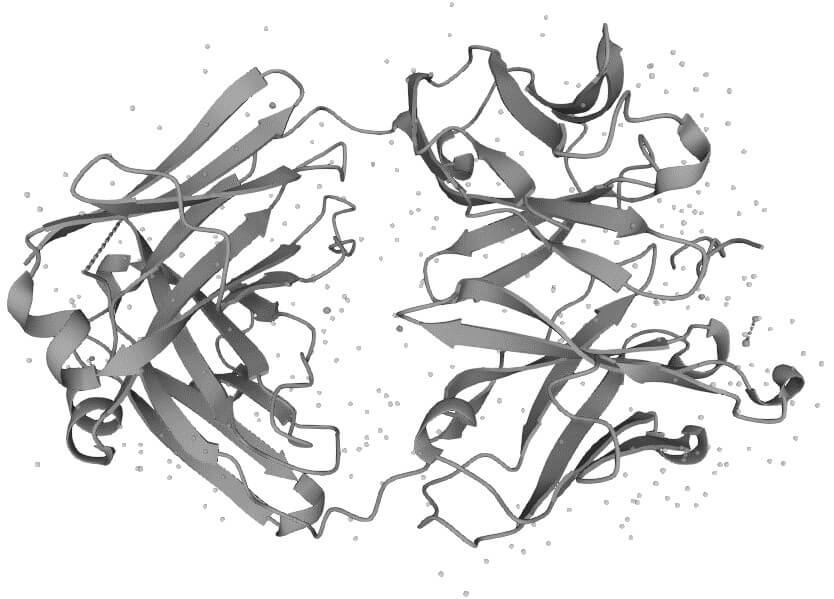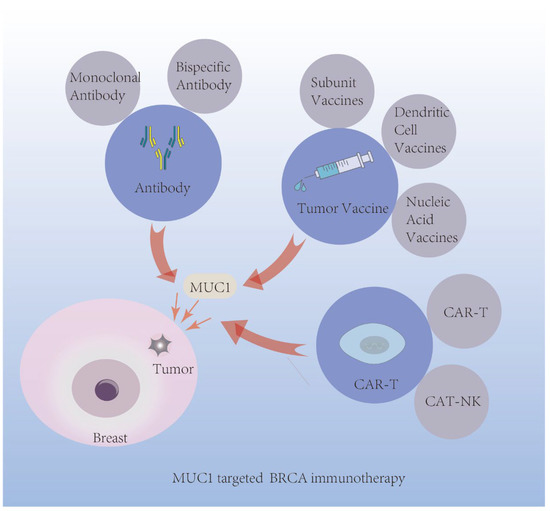Sontuzumab Overview
Introduction of Sontuzumab
Sontuzumab, also known as AS1402, R1550, and HuHMFG1, is a humanized IgG1 antibody engineered to target the human MUC1 protein (also referred to as mucin 1, CD227) in treating breast cancers. MUC1 is a glycoprotein expressed on the surface of epithelial cells, playing a significant role in maintaining the integrity and function of the epithelial barrier. Abnormal expressions and modifications of MUC1 are associated with various cancers, making it a targeted pathway for therapeutic intervention. Sontuzumab stands out in cancer therapy due to its high specificity and affinity for the MUC1 protein. Sontuzumab was first developed as a monotherapy. In a Phase I trial (NCT00096057) first submitted in 2004, sontuzumab was used to treat females with locally advanced or metastatic breast cancer to investigate its tolerability, safety, and pharmacokinetic (PK) properties. The results indicated that continuous and regular intravenous dosing of sontuzumab was tolerant without disease progression or unbearable toxicity, and the maximum tolerated dose (MTD) was determined by escalating dosing. However, no clinical therapeutic effects have been reported.
Biological and Chemical Properties of MUC1
Protein Structure
 Figure 1. The Structure of Human MUC1 (UniProt)1,2
Figure 1. The Structure of Human MUC1 (UniProt)1,2
The Mechanism of Sontuzumab Action
MUC1, a member of the mucin family of proteins, is a glycosylated protein with high molecular weight and characterized by a large extracellular domain, a single transmembrane domain, and a short cytoplasmic tail. Normally, MUC1 is primarily expressed in glandular organs such as the breast and pancreas, where it functions to protect and lubricate epithelial cells. As a member of the protective layer on epithelial cells, MUC1 acts as an epithelial barrier, preventing pathogen adherence and facilitating microbial clearance. Besides, it is involved in cell-cell interactions and signaling pathways, regulating cellular processes such as proliferation, apoptosis, and differentiation. In cancer pathophysiology, aberrant expression of the MUC1 protein may lead to abnormal cellular interactions and impaired immune recognition. For instance, in breast, ovarian, and pancreatic cancers, MUC1 is often overexpressed or undergoes aberrant glycosylation, resulting in a tumor-associated carbohydrate antigen form. This altered form may facilitate tumor invasion, metastasis, and immune evasion. The mechanism of action of sontuzumab is multifaceted. Primarily, it binds to the extracellular domain of MUC1. Upon binding to the MUC1 antigen, sontuzumab can trigger immune responses, such as antibody-dependent cellular cytotoxicity (ADCC), complement-dependent cytotoxicity (CDC), and direct apoptosis, leading to cell death. Besides, this binding blocks MUC1, thus inhibiting MUC1's pathological functions that promote tumor growth and migration from immune surveillance.
 Figure 2. The Mechanism of Sontuzumab Action3,4
Figure 2. The Mechanism of Sontuzumab Action3,4
Clinical Projects of Sontuzumab*
| NCT ID | Study Title | Study Status | Conditions | Sponsor | Start Date |
| NCT00096057 | Monoclonal Antibody HuHMFG1 in Treating Women With Locally Advanced or Metastatic Breast Cancer | Completed | Breast Cancer | Jonsson Comprehensive Cancer Center | 2004-11-09 |
* The table was excerpted from the following website: https://clinicaltrials.gov/study/NCT00096057?cond=AS1402&rank=2#study-overview
What We Provide
Anti-Human MUC1 Recombinant Antibody (Sontuzumab)
We provide high-quality sontuzumab for use in Neut, ELISA, IF, IP, FuncS, FC, ICC and most other immunological methods. The product is for lab research use only, not for diagnostic, therapeutic, or any in vivo human use.
- Host Species
- Mouse
- Derivation
- Humanized (from mouse)
- Type
- IgG1
- Specificity
- MUC1 (mucin 1, polymorphic epithelial mucin, PEM, episialin, CD227) [Homo sapiens]
- Species Reactivity
- Human
- Applications
- Suitable for use in Neut, ELISA, IF, IP, FuncS, FC, ICC and most other immunological methods.
- CAS
- 372075-37-1
- Generic Name
- sontuzumab
- Related Disease
- Breast cancers
- UniProt Database (https://www.uniprot.org/uniprotkb/P15941/entry)
- The image was retrieved from UniProt Database and used under [CC BY 4.0]. It was not modified and the title was " The Structure of Human MUC1".
- Li, Zhifeng, et al. " Advances in MUC1-mediated breast cancer immunotherapy." Biomolecules 12.7 (2022): 952.
- Images retrieved from Figure 4 "Advances in MUC1-mediated breast cancer immunotherapy." Li, Zhifeng, 2022, used under [CC BY 4.0]. The image was not modified and the title was changed to " The Mechanism of Sontuzumab Action".
For research use only. Not intended for any clinical use.
This site is protected by reCAPTCHA and the Google Privacy Policy and Terms of Service apply.

